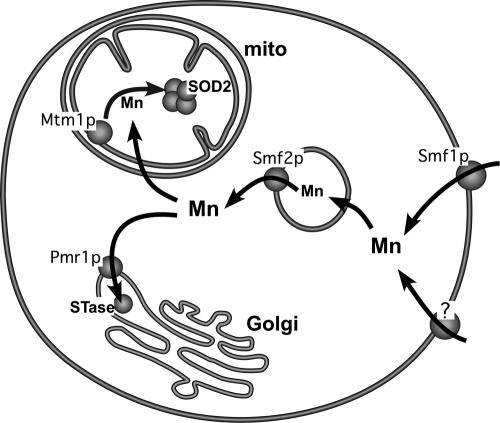FIG. 1.
A model for intracellular trafficking of manganese under physiological growth conditions. When S. cerevisiae cells are grown under normal laboratory growth conditions (i.e., standard enriched or minimal medium containing ≈1 to 5 μM Mn), the metal is taken up via the Nramp metal transporter Smf1p and also by another, as-yet-unidentified metal transporter(s) (“?”) at the cell surface. The manganese then traffics through Smf2p-containing vesicles that may represent storage or transient passage stations for the metal. The Smf2p-transported manganese can then move to either the Golgi or mitochondria (mito). Pmr1p pumps manganese into the Golgi for activation of STase enzymes. Although the means by which mitochondria take up manganese is still unknown, Mtm1p in the inner membrane facilitates insertion of the metal into mitochondrial SOD2.

